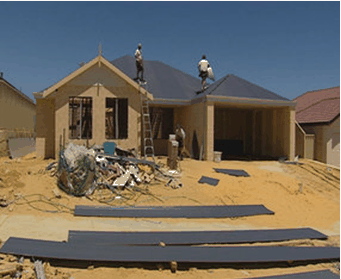
The Bank of New Zealand’s chief economist, Tony Alexander, has today provided a radical eight-point plan to restore housing affordability. From Interest.co.nz:
Alexander says the optimal solution to the problem “is a quick jump in house supply combined with reductions in building materials costs”.
His suggestions are:
- Initiate a large builder training programme targeting not just youth but low skilled migrants. “Yes, the migrant gates would need to be opened. Just the signalling of strong intention to boost builder numbers would make investors think twice about their capital gain assumptions,” he says.
- Ban councils from imposing any development fees and allow developers to install their own infrastructure.
- Create an SOE whose sole purpose is to undercut existing building materials suppliers through bulk purchases from offshore, nodal warehousing and distribution from just three or four locations in the country, with a separate agency responsible for monitoring the quality of materials sourced.
- Initiate a new large state house building programme relying largely on the to be created new carpenters etc. Constrain new state houses to more efficient building systems including containerised modular housing (this doesn’t involve shipping containers), central and screwed in foundations, etc.
- Ban house sales to non-residents (even new houses given the ease with which special developments could arise targeting solely folk offshore and soaking up construction sector resources).
- Impose a tax on all houses owned by Kiwis offshore with the aim of encouraging them to sell them.
- Put in place a capital gains tax on second properties and farmland and immediately payable stamp duty for all second house purchases.
- Rezone all land within 10-20 kilometres of existing city boundaries as residential.
Alexander’s assessment of the chances of the eight, in order, of being implemented are: “Low, zero, zero, mild, mild, zero, low, zero.”
While all of the suggestions look good, I particularly like the idea of re-zoning all land within 10-20 kilometres of existing city boundaries as residential. When combined with allowing developers to install their own infrastructure (point 3), presumably funded via some kind of Texas-style bond financing system, such an approach would act to significantly lower the cost of new lots, reducing home prices in the process. The added contestability and competition from land holders would also deter land banking activities, since developers/buyers could always purchase land further afield (rather than being restricted to a limited amount of zoned land).
Other suggested additions to the menu include:
- Quarantining negative gearing, so that investors can only offset rental costs against rental income (rather than against wage/salary income), with any losses carried forward to future years; and
- Implementing a broad-based land tax, in order to deter speculation, land banking, and facilitate infrastructure financing and provision.
Any other suggestions?

